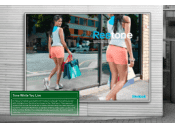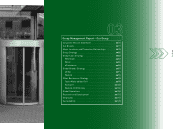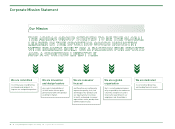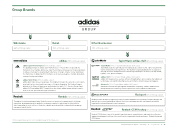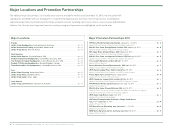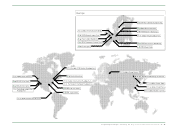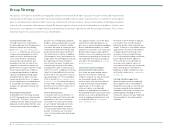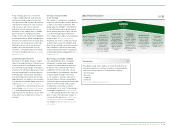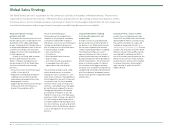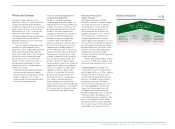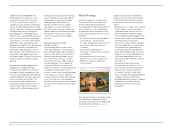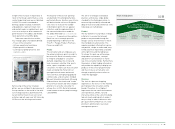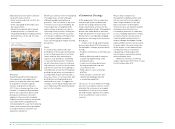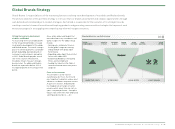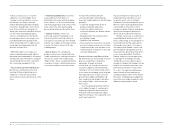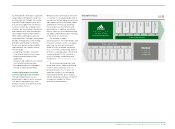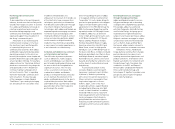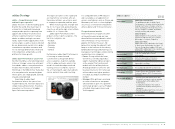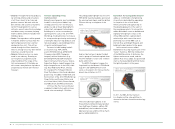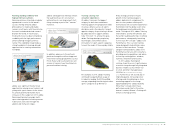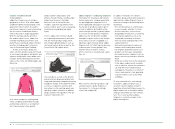Reebok 2010 Annual Report Download - page 88
Download and view the complete annual report
Please find page 88 of the 2010 Reebok annual report below. You can navigate through the pages in the report by either clicking on the pages listed below, or by using the keyword search tool below to find specific information within the annual report.
84 Group Management Report – Our Group Global Sales Strategy Wholesale Strategy / Retail Strategy
− Never-out-of-stock (NOOS): The
NOOS programme comprises a core
range of basic articles, mostly on an
18- to 24-month lifecycle, that are
selling across all channels and markets.
Overall, the NOOS replenishment model
secures high levels of product availability
throughout the season, allowing for
quick adaptation to demand patterns.
Retailers have to provide dedicated retail
space, co-invest in fixtures and fittings
and commit to a “first fill” representing
about 25% of total expected seasonal
demand to participate in this programme.
In return, customers can profit from
significantly reduced inventory risk on
these products. Most NOOS articles are
on an end-to-end supply chain, thus
limiting the adidas Group’s inventory risk
as we re-produce following customer
demand.
Harmonisation and standardisation
of processes to exploit leverage
Our Wholesale segment is constantly
working on further leveraging the size
of our Group and reducing complexity by
implementing best operational practices
across our wholesale activities. The
harmonisation and standardisation
particularly of back-end processes can
help to further reduce cost through
simplified IT systems and applications.
Similarly, and already started in Europe,
we are rolling out a trade terms policy
that rewards customer performance
either by higher efficiency (e.g. in
logistics) or better sell-out support
(e.g. by point-of-sale activation). As
part of this effort, we have established
regular reporting, delivering meaningful
benchmarks that allow us to tightly
control our third-party retail support
activities.
Innovation key to accelerate
speed-to-market
Accelerating product creation, while
reducing complexity is a key element to
gain competitive edge and ultimately to
increase shelf space at our customers.
We have therefore developed a virtual
sell-in tool which allows us to contin-
uously offer a holistic sample range to
our retail partners. This is giving the
customer the benefit of having a “full
range in his pocket”. The reduced amount
of samples used during the sell-in
process as well as the streamlined image
creation process increase speed-to-
market, while at the same time reducing
costs. This new tool has already been
piloted in several markets and is targeted
to cover 60% of all Wholesale pre-orders
by 2013.
Retail Strategy
Our Retail segment’s strategic vision
is to become one of the top retailers
in the world by delivering healthy,
sustainable growth with improved return
on investment see 02. Retail plays
an important role for the growth of our
Group and our brands. The reasons are
manifold:
– As a place to showcase the breadth of
our brands (i.e. concept stores)
– To create distribution in markets which
do not have traditional wholesale
structures
– The share of selling space via
wholesale is in decline due to industry
consolidation
– Everything we learn in own retail
benefits the rest of the organisation
– Need for a clearance channel (i.e.
factory outlets).
Over the past five years, the adidas Group
has evolved into a significant retailer,
operating 2,270 stores for the adidas and
Reebok brands worldwide see Retail
Business Performance, p. 153.
Reebok
Core Store in Warsaw
Going forward, we have simplified the
shape of our store chain, by clustering
it into three different formats, namely
brand centres, core stores and factory
outlets.
– Brand centres, i.e. large stores carrying
the full range of each of our adidas
sub-brands under one roof, are the
bold and powerful statements about
their strength, breadth and depth. This
format will be kept to a limited number
and only in exclusive locations.
– Core stores are the commercial engine
for sales and profit across the Group’s
retail organisation, upholding and
accentuating each brand’s reputation.
There will be adidas brand core stores,
Originals core stores and Reebok core
stores and, depending on their size,
they will be categorised and clustered
into A, B or C.
– Our factory outlets will facilitate
the controlled sale of excess stock
returned from our wholesale key and
field accounts, franchise partners,
e-commerce as well as own-retail
stores. Through improved management
of regional inventory and limited
planned production, we want to improve
and balance our product offering
and therefore further increase our
profitability.


